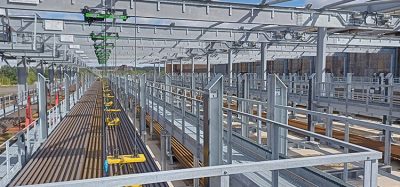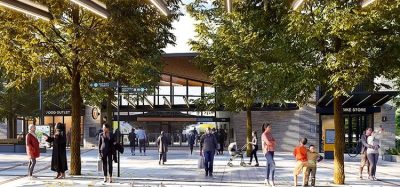In the view of Philippe Gauderon, Head of SBB Infrastructure
Posted: 21 July 2009 | | No comments yet
Mr. Philippe Gauderon took up his new position as Head of SBB Infrastructure and Member of the SBB Management Board at the start of 2009. After studying law at the University of Fribourg, Mr. Gauderon initially worked as a lawyer until 1985. Between 1985 and 1995, he held numerous senior positions at the Swiss Federal Office of Transport (FOT), including that of Deputy Director from 1990 to 1995. Mr. Gauderon joined SBB in 1996 as Director of what was then District 1 in Lausanne. When SBB was restructured as part of reforms to the rail system in 1999, Mr. Gauderon took over as Head of Regional Services in what was then known as the Passenger Traffic Division, where he was also a member of the divisional management board. In October 2003, he was made Head of Operating and Deputy Head of the Passenger Traffic Division.
Mr. Philippe Gauderon took up his new position as Head of SBB Infrastructure and Member of the SBB Management Board at the start of 2009. After studying law at the University of Fribourg, Mr. Gauderon initially worked as a lawyer until 1985. Between 1985 and 1995, he held numerous senior positions at the Swiss Federal Office of Transport (FOT), including that of Deputy Director from 1990 to 1995. Mr. Gauderon joined SBB in 1996 as Director of what was then District 1 in Lausanne. When SBB was restructured as part of reforms to the rail system in 1999, Mr. Gauderon took over as Head of Regional Services in what was then known as the Passenger Traffic Division, where he was also a member of the divisional management board. In October 2003, he was made Head of Operating and Deputy Head of the Passenger Traffic Division.
Mr. Philippe Gauderon took up his new position as Head of SBB Infrastructure and Member of the SBB Management Board at the start of 2009. After studying law at the University of Fribourg, Mr. Gauderon initially worked as a lawyer until 1985. Between 1985 and 1995, he held numerous senior positions at the Swiss Federal Office of Transport (FOT), including that of Deputy Director from 1990 to 1995. Mr. Gauderon joined SBB in 1996 as Director of what was then District 1 in Lausanne. When SBB was restructured as part of reforms to the rail system in 1999, Mr. Gauderon took over as Head of Regional Services in what was then known as the Passenger Traffic Division, where he was also a member of the divisional management board. In October 2003, he was made Head of Operating and Deputy Head of the Passenger Traffic Division.
SBB Infrastructure is responsible for the smooth operation and the construction and maintenance of SBB’s approximately 3,000km-long network. In 2004, after around a decade of planning and construction, SBB implemented ‘Rail 2000’, a significant step forward for public transport services. As a result of Rail 2000, approximately 16% more trains have been running on the network since 2004; and between then and 2008, the number of train-kilometres offered increased by up to 40%. Passengers have also benefited from shorter travel times thanks to the new high-speed Mattstetten-Rothrist line. Mr. Gauderon believes that Rail 2000, as well as other expansions in recent years and the optimisation of the timetable planning process, represent massive gains for SBB’s customers and for public transport in general. However, they conceal inherent problems, notably for infrastructure.
According to Mr. Gauderon, the gap between costs on the one hand and revenues on the network on the other continues to grow. The main reason for the disproportionate rise in costs is an increasing number of faster and heavier trains, which give rise to greater wear and tear: this, in turn, pushes up the costs associated with the initial investment (depreciation, maintenance costs) and generates additional demands in terms of safety, quality and infrastructure availability. This can be seen in the evolution of the number of train-path kilometres covered on the rail network – the current 3,000km of routes has seen a 28% increase since 1999, and SBB predicts that today’s figure of 160 million train-path kilometres will have risen to 171 million by 2015.
By contrast, SBB is dealing with stagnating revenues as a result of service level agreements with the Swiss Confederation, the owner of the network, as well as a regulated train path price. The latter instrument is only effective up to a point: under the current system based on a contribution margin, it is oriented primarily to the customer’s revenues and therefore does not provide any incentive to use the existing infrastructure and network in a manner that makes the best use of capacity. SBB Infrastructure is currently working together with FOT on a train path pricing system due to come into force in 2013, which puts greater emphasis on creating more capacity and ensuring that railway companies are charged commensurately with actual use. This, together with considerations of quality, will bring about train path pricing that is better geared to market conditions.
In a bid to counter what is a difficult development both for SBB as a whole and particularly for Infrastructure, Mr. Gauderon sees a number of cost-saving opportunities. These include increasing overall efficiency levels within Infrastructure – for example by streamlining the management head count, examining and differentiating standards and requirements, and realising optimisation potential in the procurement of materials and services. On the revenue side, Mr. Gauderon is targeting pricing changes within Infrastructure – in areas such as energy – and the expansion of third-party services over a longer timeframe.
As well as the relationship between costs and revenues, Mr. Gauderon sees Infrastructure facing other challenges too. These include removing bottlenecks in the existing network as part of the Rail Infrastructure Development Plan (ZEB), and securing funding for network expansion and the costs associated with this (particularly maintenance) from the Swiss Confederation. Maintaining a stable level of punctuality with the same high density of traffic and running an already heavily used network efficiently are also difficult tasks facing the division.
Mr. Gauderon’s first 100 days in charge of Infrastructure have seen him realise the potential for further optimisation within the division itself. With the aim of achieving Business Excellence within SBB Infrastructure by 2014, divisional management will be drafting reforms of the organisation, based above all on the clear definition of processes right across the value chain. In addition to this, Mr. Gauderon believes that the factors leading to Business Excellence include integrated planning and conceptual strength, innovations, efficient processes and a philosophy of continuous improvement. The Head of Infrastructure feels that the necessary change in culture associated with this presents his 9,000 employees with a challenge, but also with an opportunity.







